This is my virtual gallery that I’ve created using the photographs I’ve captured across the anthropocene project.




This is my virtual gallery that I’ve created using the photographs I’ve captured across the anthropocene project.




–period of time during which human activities have impacted the environment enough to constitute a distinct geological change.
The reason Anthropocene is used in photography is to bring awareness to the consequences of human action on the environment and photographers use natural evidence in there work to show people the destruction global warming is causing.
Here are some examples


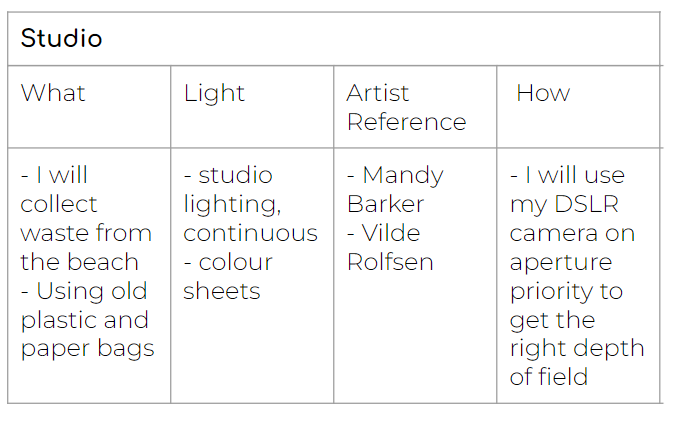

What does Anthropocene mean? Anthropocene is the current world period, seen as the period where human activity has affected the climate and environment.
Anthropocene photography is the idea of capturing how humans have affecting the natural environment, often for the worse. This style has become prominent with the current climate crisis.

With climate change and excess waste, the green house gasses emitted damages the ozone layer which means less heat goes into space and heats up the earth.
This therefore, destroys causes more extreme weather and also causes icebergs to collapse. Due to this, water levels in countries are rising, leaving many people homeless.


Not only has the sea levels risen but it has also caused more frequent and violent wildfires. Not only does this displace people from their homes, it destroys animals habitats and kills.


In addition, the over fishing crisis and the increase in temperature in the world has caused Earths oceans to heat, causing coral to die. Corals support 25% of sea life.

Not only is the pollution harmful to the environment, it is also severely damaging to peoples health. There is significant evidence showing that air pollution contributes to cancers such as lung cancer. In 2010 there were 223,000 lung cancer deaths linked to air pollution.

Excess waste and plastics are flooding the earth currently. Plastics can take 20 to 500 years to break down. Therefore the excess waste of mostly single use plastics such as plastic bags and water bottles are everywhere, in our oceans, in animal habitats and in dumping grounds.

Anthropocene photography is not to be admired, it is to raise awareness of the damage we as humans have created to the previous near perfect earth. It is made to shock and to create a reality of how much damage we has humans have done to the earth and how we need to stop before it is too late.
Vilde Rolfsen


Vilde Rolfsen is a photographer born in Oslo, Norway. She attended Kingston University with a first degree Bachelor in Fine Art Photography and currently attends Oslo National Academy of the Arts. Rolfsen uses plastic bags and different lighting to produce these beautiful images. She does this to raise awareness about single-use plastics and throwaway culture. She was very successful in these photographs and sells prints on her website from £8000-£65000.
Analysis

This is a digital photograph by Vilde Rolfsen taken with a Canon eos D60 camera. The mise en scene presents an abstract photograph it presents a plastic bag and the interesting patterns of it using different lighting. It almost looks like a flowers petals of a rose. Rose petals love which sparks joy to the audience. There is a wide depth of field as most of the photograph is in focus, it shows the crisp patterns of the bag, the random patterns are similar to rock formations. The image feels like it is descending, which creates the idea of a alien void which we as the audience are exploring through this photograph. The edges are blurred which leads me to believe it has an f/stop of around f/11. The shutter speed is very fast due to the crisp image. It does not follow the rule of thirds however, there are many leading lines that lead us to the centre, as shown, further accentuating the void.

Vilde Rolfsen states
“I’ve had people come up to me and say: “I’ve seen your work and I’ll never look at a plastic bag the same way again.” I want people to stop and think about the plastic cups lying around and blowing away. No one cares, because it’s normal. I don’t want to make this political statement with my images, I just want to create awareness around the issue, making people aware of it. Using a plastic bag is so stupid when you can just bring your own or use a backpack, it’s so simple.”
Opinions
Personally, I really like these images by Vilde Rolfsen and I have studied them in the past. I think the story behind them is interesting, powerful and communicates this message really well. I am going to recreate these images using a plastic bag and different coloured lighting.
Mandy Barker


Mandy Barker, born in 1964, is a British artist who is renowned for her photographs marine debris. Barker graduated from De Montfort University in England with a masters degree in photography. She works with scientists to raise awareness of the vast amount of plastic in the ocean. In the ocean there is 5.25 trillion macro and micro pieces of plastic in our ocean which weighs up to 269,000 tonnes. Every day, there are 8 million pieces of plastic that end up into the ocean. The plastic debris injures and kills fish, seabirds and other ocean inhabitants. Plastic pollution in the ocean has impacted 267 species worldwide. Barker has had many exhibitions and awards through her career such as the Fellowship of the Royal Photographic Society in 2019. She even received a handwritten letter from Sir David Attenborough himself, he said “I hope your work does its job in raising an awareness of the cause we both care so much about.”
Mandy Barker states:
“The aim of my work is to engage with and stimulate an emotional response in the viewer by combining a contradiction between initial aesthetic attraction along with the subsequent message of awareness. The research process is a vital part of my development as the images I make are based on scientific fact, essential to the integrity of my work. The impact of marine plastic is an area I have documented for more than 10 years and am committed to pursuing through visual interpretation, and in collaboration with science I hope it will ultimately lead to positive action in tackling this increasing environmental problem, which is currently of global concern”.
Opinions
I think that Barkers work is not only amazing to look at but also the message behind it is so important. Her images represent the abyss of the world and how we have filled it with rubbish. I definitely inspired by this to create my final piece. Especially this one:
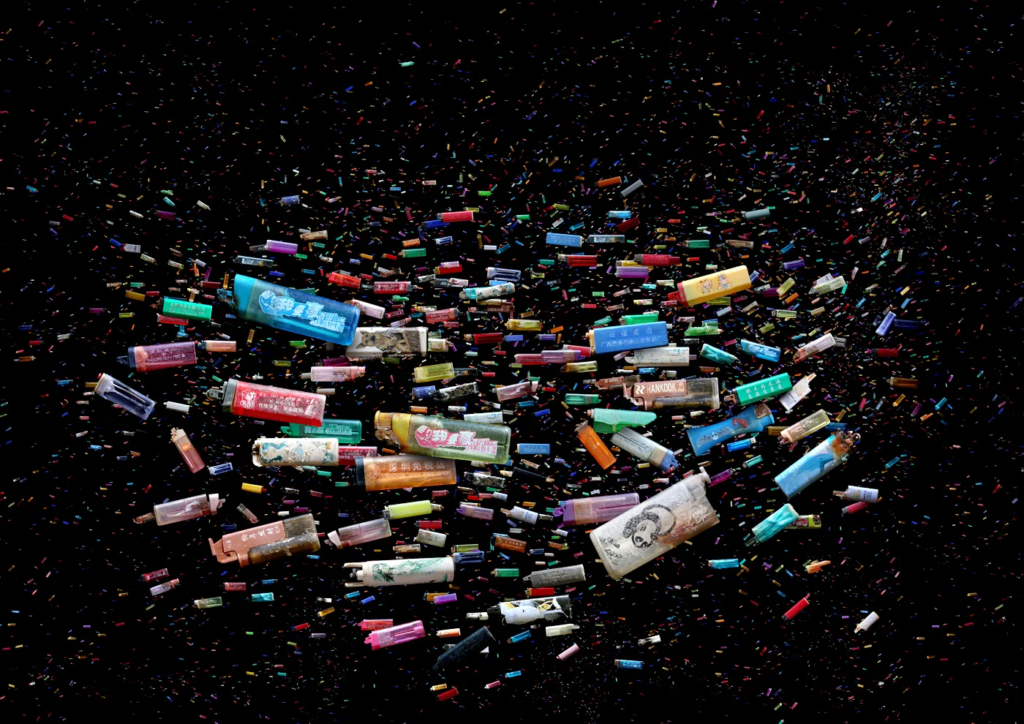
I am going to add in litter and also human hands to show how we have damaged the earth.
Photoshoot
This is my first photoshoot of the lighters.


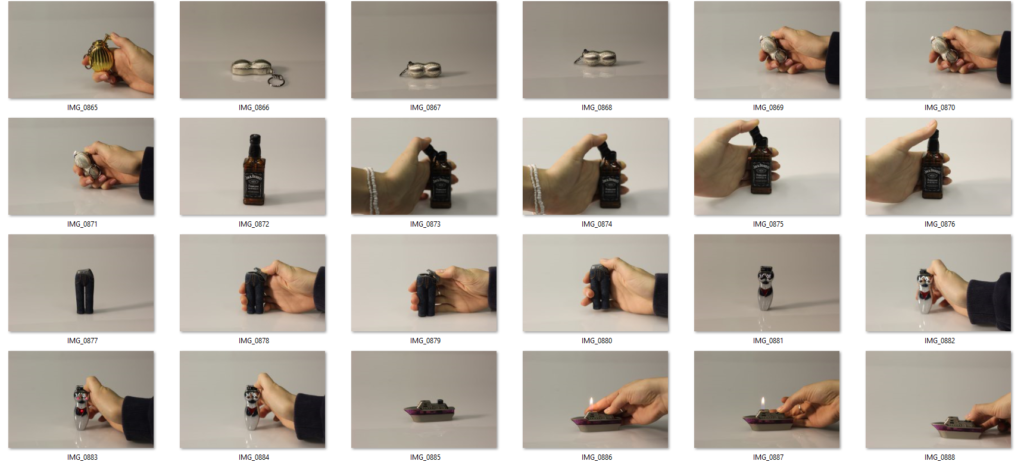
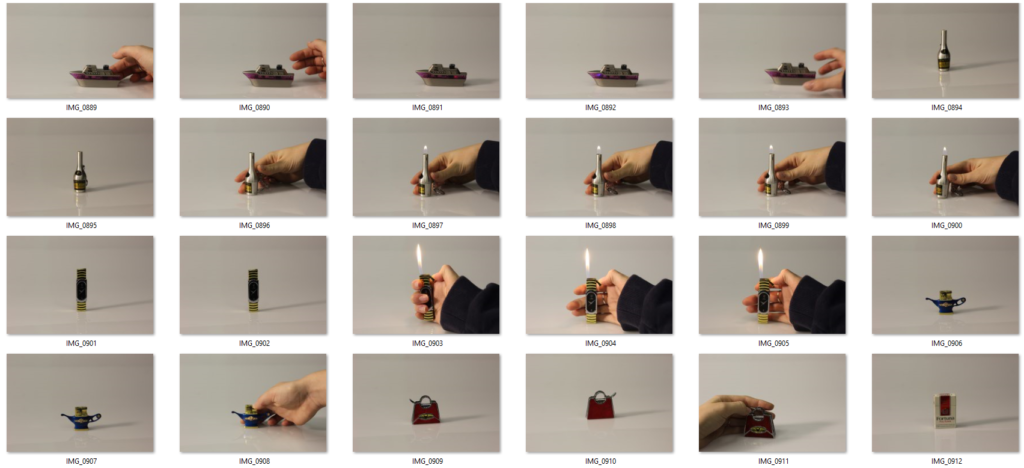
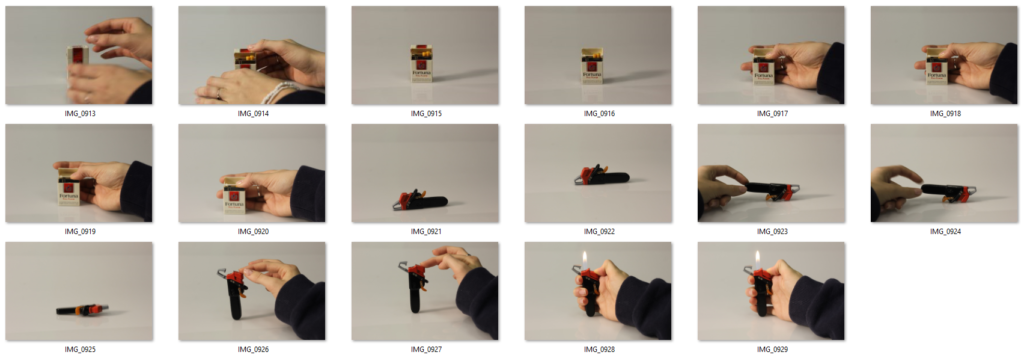
Angie McGonigal

I really like Angie McMonigal’s work. The patterns and the interesting building shapes really interest me. I would really like to include this in my final piece.
Irvin Penn was an American photographer, especially known for his still life, portraits, and ability to image fashion. He was born June 16th 1917, but died October 7 2009. During his life he created many Galleries, all being a variety of portraits, still life etc. But one that inspired me was his cigarette butts.

He took a variety of images of used, old cigarette butts that he had found on the floor. The reason behind his imagery of such a common thing was that he had a mentor/father figure of his die of cancer (most likely lung cancer), and he noticed that throughout their life they always had a cigarette. Ironically Irving himself was against smoking and even created smoking advertisements in the past. After learning about his personal loss, he decided to commit to this gallery, and saw the “uncanny” relationship between cigarettes and people, as they give momentary pleasure and how hooked people where onto them.

What one of my main aims would be to link Anthropocene with the pollution of these used cigarettes scattered almost everywhere. Not only that but considering the amount of common smokers in this world, the smoke given out off into the air layers on top the way that the world is being treated, and how people even treat themselves.
Power Plant + Cigarette (link)
Smoke of Cigarette/Chimney
Skeleton Hand + Cigarette
(jerry uelsmann)
Gustave Le Gray
Le Gray was a French Photographer who is very well known for his work in Photography and his technical innovations like the waxed paper negative, which he made to make photos look sharper and better. He is also known as “The most important French Photographer of the nineteenth century”.
“The Great Wave”
“The Great Wave” was one of his many famous photos, it features a shot taken in Sète, France, 1856 at a shoreline:

The photo appears very eerie in a sort of way, with the bright sky combined with the dark sea and black rocks, it creates a powerful contrast in the picture and it makes it feel more dramatic and extreme. You can see the choppy waves crashing on the sea wall which adds to the photos harshness in addition to the very opaque, black clouds in the sky. The darkness overall makes a very closed in and claustrophobic environment for the viewer, especially around the edges of the frame where it looks almost like a sort of faint vignette. This image is quite compelling given the points I just made and creates a unique feeling to the viewer which is why I like it.
I think this photo relates to Anthropocene quite well as it shows the sea wall, being a man-made structure, and the ocean clashing together which could be trying to visualize man intercepting with nature and nature trying to fight back. I think the weather may be important here along with the colour too. The colour palette in this photo doesn’t create a happy feeling, it’s more sad and depressing. The harsh weather in addition can relate to themes of anger and rage, all of these emotions could be symbolising God being angry at humans and what we are doing to the world he created.
Dafna Talmor
Dafna Talmor is another Photographer who takes landscape photos. He composed an album which consisted of all the photos he took that are under his Constructed Landscape Photography project:
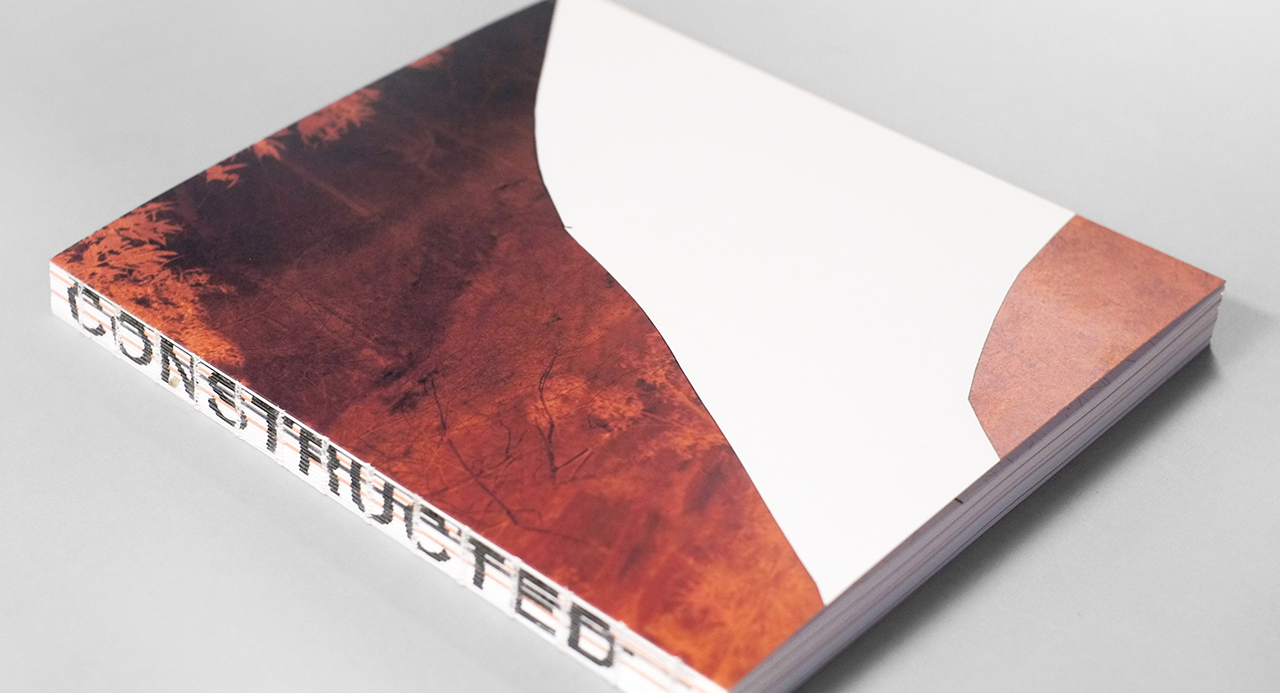
The photos within would contain edits that would involve stitched and spliced methods to “remove the negatives of the image”. Almost to “fix” the image by replacing removed areas with the colour black:



Talmor has also taken other images and put them together. They have been labelled as “aims to transform a specific place initially loaded with personal meaning, memories and connotations – into a space of greater universality.”.
I like the mysterious nature behind these photos, it fractures the photo to alter reality and distorts our view on the world through the frame. It may be trying to tell us the fact that we have done so much damage to the planet for so long, that trying to fix the world at this point will not restore it to 100% and will be forever different, hence the black spaces in the photos that indicate gaps and breakages.
Another thing it could be attempting to show us is mostly based on the photos combined together. They could be trying to show us different parts of the planet as one, to show us how what we are doing is affecting everywhere else, even if we don’t think we are.
Using the work of Andreas Gursky and Fay Godwin as an inspiration, I want to create a series of images that show the stark difference between the bleak and ominous shapes of man-altered landscapes and the beautifully fruitful natural landscape.
To emphasise this contrast, if possible, I want to use images of dark and stormy skies over the former and more sunny and bright weather over the latter. This should be quite achievable given the imminent forecast.
This links to the infamous and ever-increasing occurrence of extreme weather systems being experienced in our temperate European climate due to the effects of climate change. See this article by Greenpeace UK, where they illustrate just how the effects of climate change can lead to the emergence of common heatwaves, floods, wildfires and more.
However, I do think that this project will be a blend of both abstraction and landscape, as I plan to use the effects of both shape and texture to my advantage. An example could include the difference between indomitable man made reservoirs and the beautiful valleys that they (some may argue unfortunately) inhabit.
Alternatively, I could photograph wild areas of land like the dunes or forest areas and juxtapose them with the starkness of the fields adapted for agriculture. Perhaps, if I can find a subject, I would also like to show some images of a man-made structure being reclaimed by nature. This would result in a series of diptychs/triptychs that I could present as separate comparisons.
I may end up using some images from my Romanticism project as well, as these areas of raw and emotional natural beauty are the kind of ones I want to document in my work, as these are the ones that will create the most stark contrast.




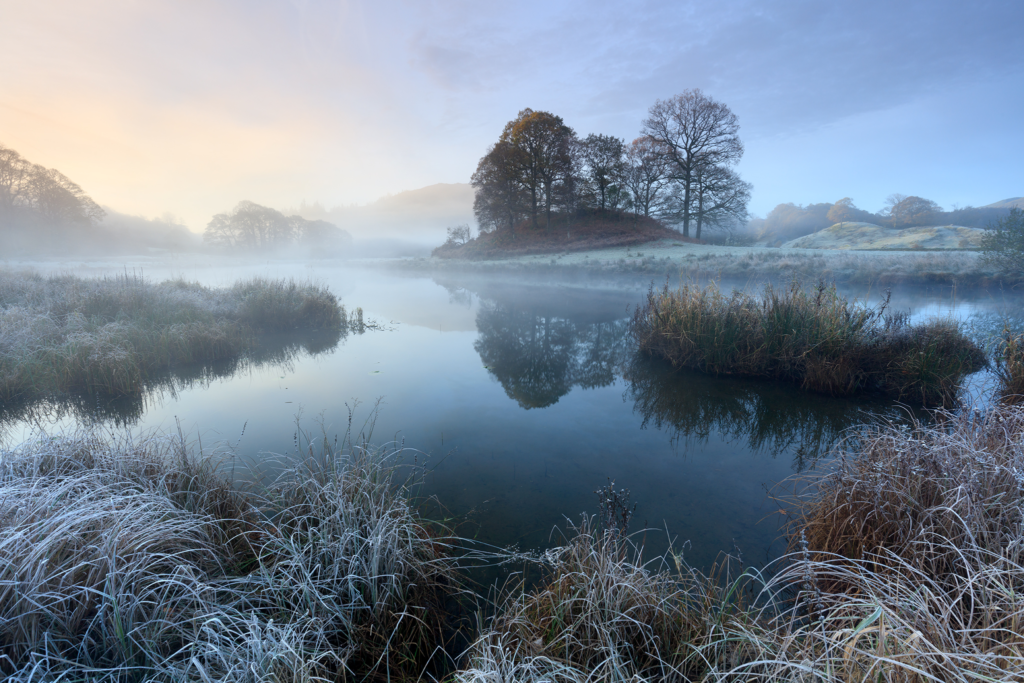
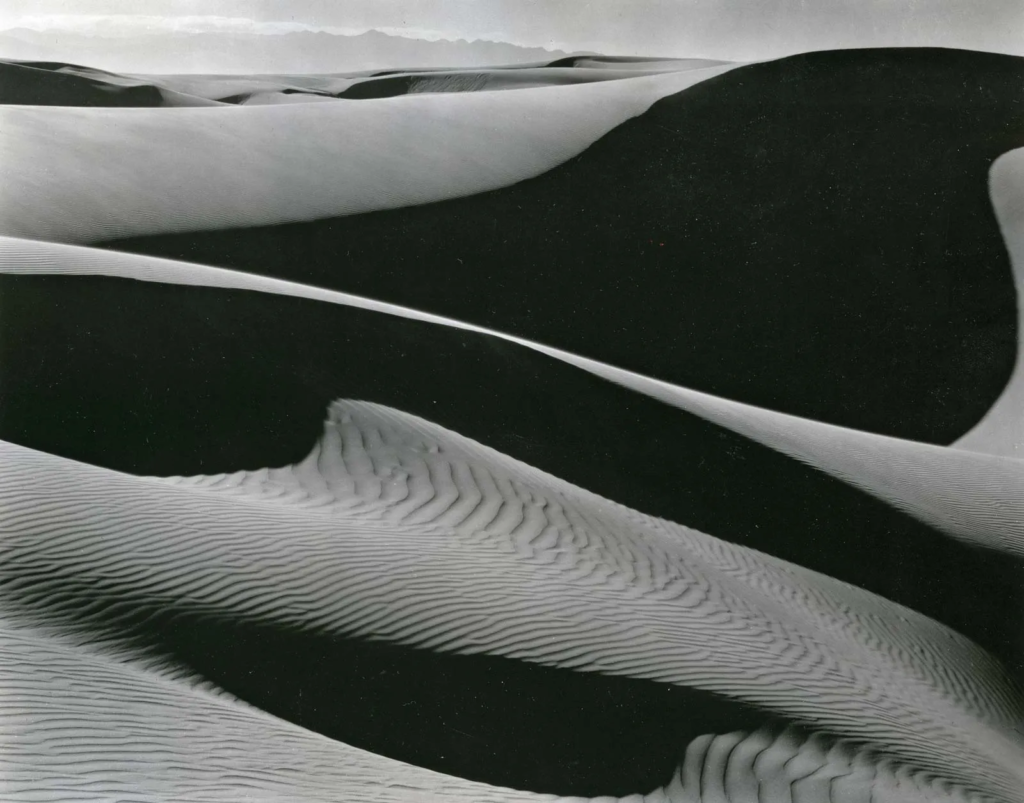



Some locations I could think about photographing for the first section may include the industrial areas in Jersey like La Collette recycling centre, the fields around L’etacq which are farmed all year round and reservoirs such as Val de la Mare and Queen’s Valley.



For the second section, I could go to the Les Mielles nature reserve for views of the sand dunes/marram grass or alternatively the countryside surrounding Beauport bay and cliffs or Greve de Lecq woods for the forestry.


For the final section, I only really know of one place that could respond to this which is a seemingly abandoned house in St Ouen, but I will look out for similar examples of this.
David Maisel is a photographer from New York, he has many concerns about the politics and aesthetics of radically human-altered environments as he explores the relationship between nature and humanity today. His work focuses on how the landscape and terrain is radically being altered and is hidden from us. Maisel’s images shows us what is really going on behind the scenes as our landscapes are being transformed. He takes his images from an aerial view so the audience can see the true drastic effects we our having on the world, which are being hidden from us and how vastly the landscape has been changed.
I have chosen to study David Maisel because when looking through his projects I can see how they relate to the theme of Anthropocene as he shows how landscapes have been radically transformed. I’m going to focus on his mining project as I think the show how drastically our landscapes are being changed to extract minerals and raw materials. In ‘The Mining Project’ I’m drawn to the images with small patches of colour within the images as they have more depth and have a sense of awe surrounding them. In response I’m going to take images of Ronez quarry.
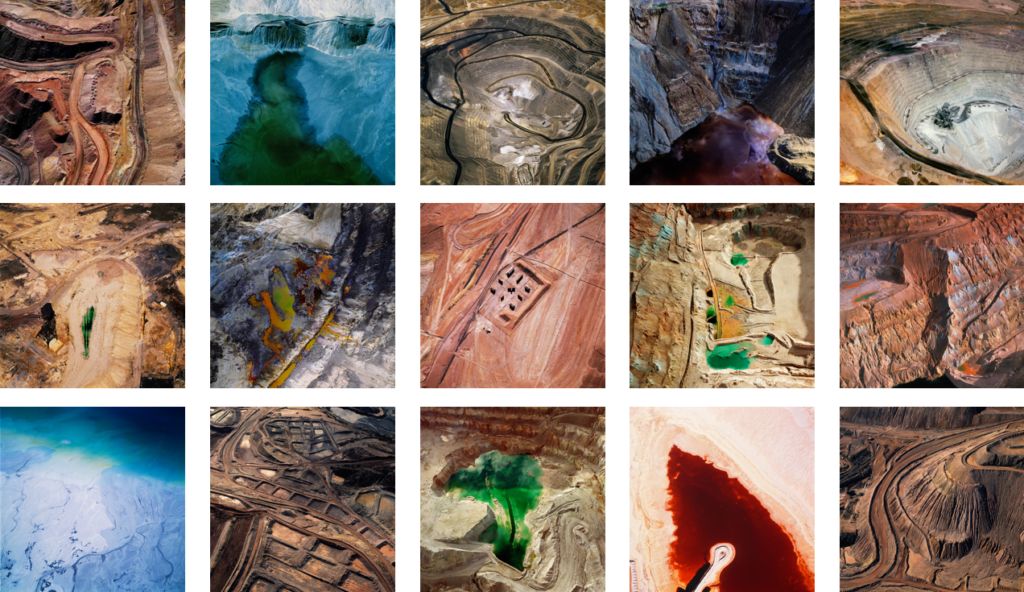
The Mining Project consists of images taken from across the United Sates of sites that have been radically transformed by open pit mining. The Mining Project considers sites like the Berkeley Mine in Butte, Montana, which has an open pit filled with severely poisoned water. Mines from this region are the source of devastating mercury emissions, released when ore is heated during the process of gold extraction. This relates to the theme of Anthropocene as human activity is causing harm to the environment, mainly the food chain because it accumulates in water laid sediments where it converts into toxic methylmercury and enters the food chain.
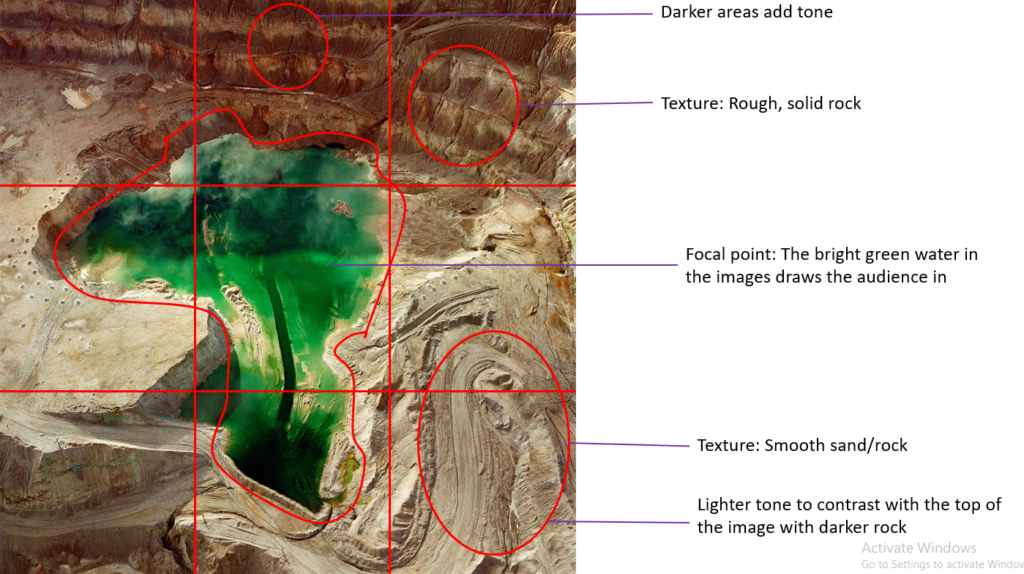
This is a digital image of a mining site in Montana. The mis-en-scene presents Berkeley Mine in Butte, Montana with polluted water in the centre, which is the focal point of the image. Within the image you can see the contrast in the different tones in the rocks throughout the thirds, getting darker as you go up the image. The use of light is natural and is coming in from the bottom of the image creating a small shadow at the top. The photo has been taken from an aerial view looking down at the quarry/mining site. This enables Maisel to get depth in his image. All of the image is in focus suggesting it was taken with a large depth of field.
For my project I am going to take inspiration from ‘The Mining Project’ and take photos of ronez quarry which extract products used for construction around Jersey.


Le Gray was born in 1820 near Paris and trained there as a painter. Around 1847 he took up photography. Even before making the marine images, he became one of the most renowned pioneers of the new art. His architectural, landscape and portrait photographs, his writings, teaching and inventions were all highly influential.
The Great Wave, the most dramatic of his seascapes, combines Le Gray’s technical mastery with expressive grandeur. He took the view on the Mediterranean coast near Montpellier. At the horizon, the clouds are cut off where they meet the sea. This indicates the join between two separate negatives. The combination of two negatives allowed Le Gray to achieve tonal balance between sea and sky on the final print. It gives a more truthful sense of how the eye, rather than the camera, perceives nature.

“It is my deepest wish that photography, instead of falling within the domain of industry, of commerce, will be included among the arts. That is its sole, true place, and it is in that direction that I shall always endeavor to guide it” – Gustave Le Gray
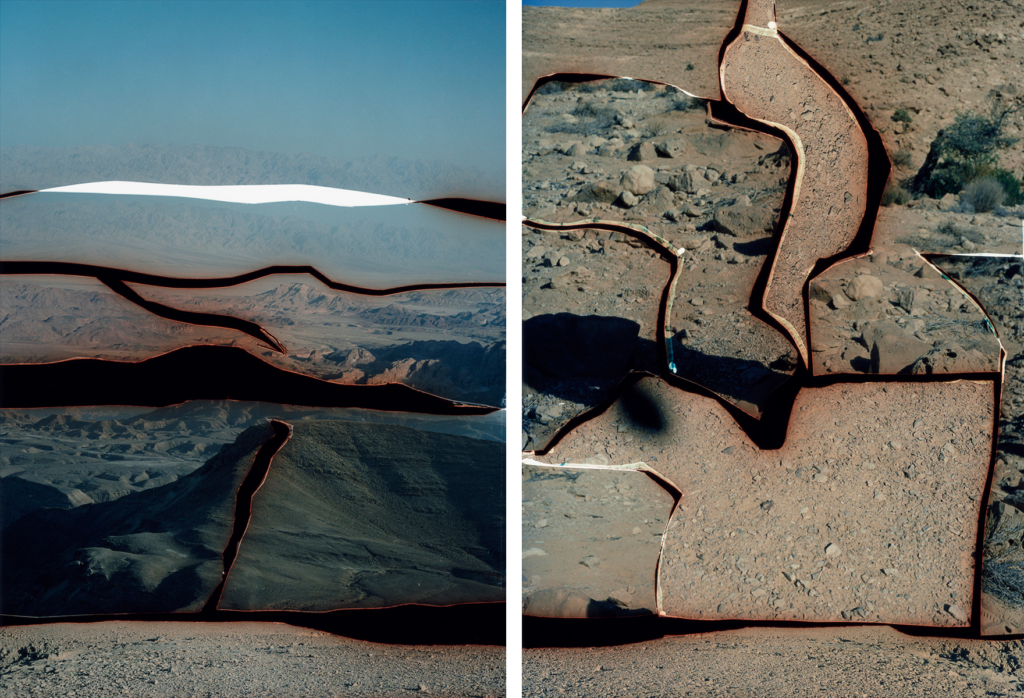
Dafna Talmor is a London based artist, photographer and Lecturer who practices encompasses photography, spatial interventions, curation and collaborations. She creates her work by using two different negatives and cutting them up with a scalpel to merge the photos together when developing them. Talmor combines colour negatives of landscapes that she has been collecting for years and transforms them into visually striking compositions that are devoid of man made structures.
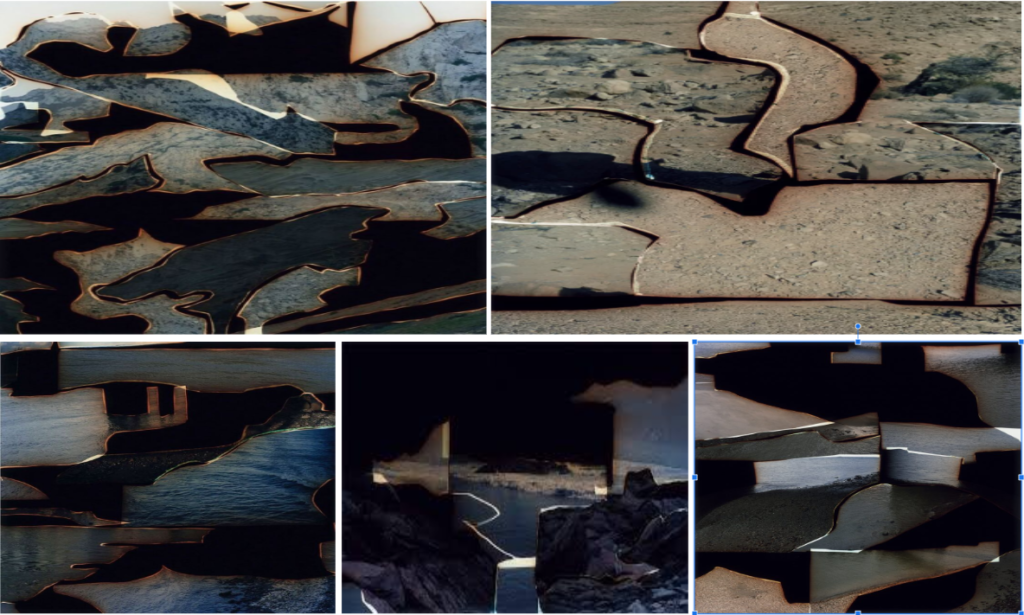
Dafna Talmors relationship to photography’s histories and a growing awareness of the climate crisis have have all contributed to designing a project which attempts to explore how photographers have created unusual and provocative visions of the natural world. Gustave Le Gray also focused on the idea of photographing the natural world as the dramatic effects of sunlight, clouds, and water in Le Gray’s seascapes stunned his contemporaries and showed his eye for nature. At his time photographic emulsions were not equally sensitive to all colors of the spectrum which means most photographers found it impossible to achieve proper exposure of both landscape and sky in a single picture. Le Gray solved this problem by printing two negatives on a single sheet of paper: one exposed for the sea, the other for the sky, and sometimes made on separate occasions or in different locations.
Mandy Barker is an international award-winning photographic artist whose work involving marine plastic debris for more than 13 years, has received global recognition. Working with scientists she aims to raise awareness about plastic pollution in the world’s oceans, highlighting the harmful affect on marine life, climate change and ultimately ourselves – leading the viewer to take action. She was born in 1964 and is currently 59 years old.
At first, she photographed the waste as she found it, but after realising this didn’t attract much of the medias attention she attempted a different approach, this time which turned out to be much more successful. The swirls of colours and patterns draw in the images in the audience’s eye, only to realize that these visually appealing compositions consist of garbage that animals have attempted to chew, plastic pellets, tangles of fishing line, and water-logged soccer balls.
“The aim of my work is to engage with and stimulate an emotional response in the viewer by combining a contradiction between initial aesthetic attraction along with the subsequent message of awareness. The research process is a vital part of my development as the images I make are based on scientific fact which is essential to the integrity of my work”
– Mandy Barker

The series ‘PENALTY’ aims to create awareness about the issue of marine pollution by focusing attention on the football as a single plastic object and global symbol that could reach an international audience. This project turned out to be very successful and captured the attention of many more viewers, proving to be very effective. The interesting shape the balls are arranged in (the majority being placed from biggest to smallest, with some smaller balls scattered around the main shape) creates an bizarre appearance. The story behind the balls (as described below) was another aspect of this project that made it so popular.
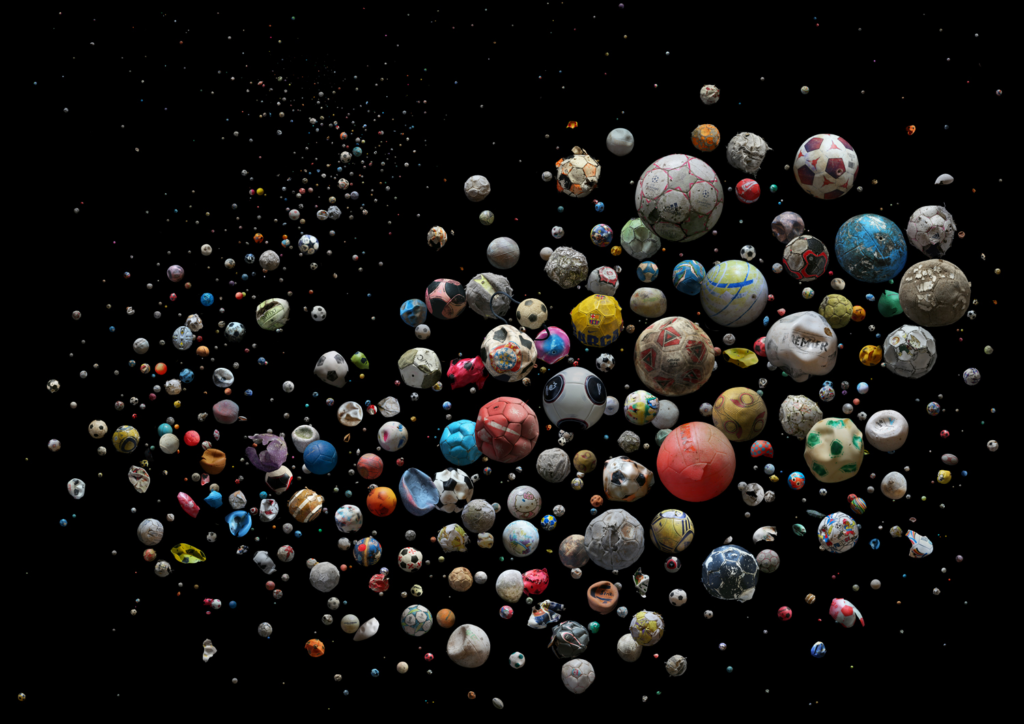
“I noticed over the last 20 years that the natural objects I used to collect were being replaced by man made ones”
– Mandy Barker in response to the question “How did you start focusing on ocean plastic as a both a message and a medium?” from the Plastic Politics interview.
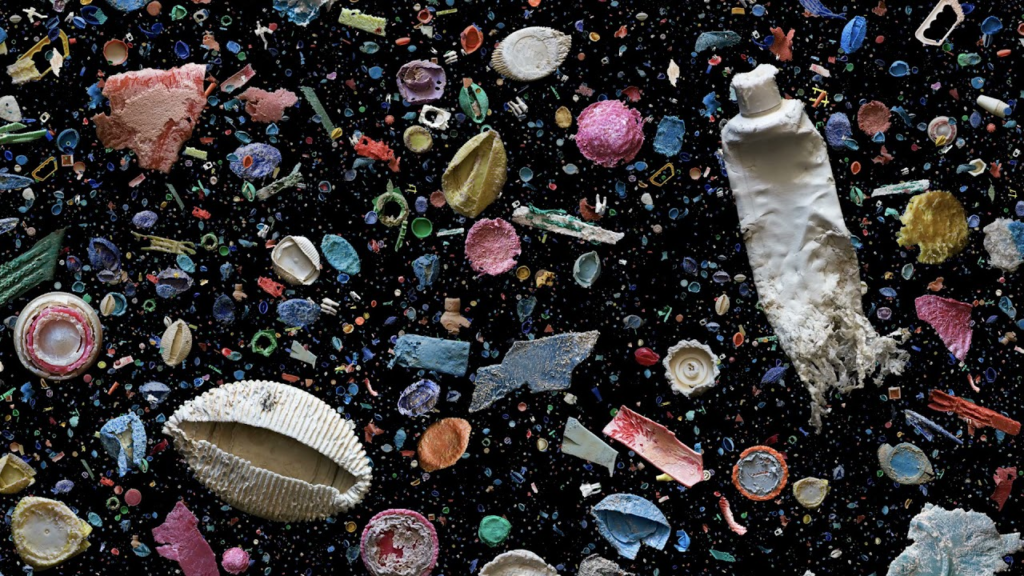
At first, Barker took her images of plastic pollution in its original residence, the beach, however after realising people weren’t giving her and her work the feedback and reaction she wanted, she came up with the idea of collecting lots of plastic waste and photographing it on a piece of black velvet. In this photo, she wanted to give the illusion of the plastic floating around underwater, therefore she scattered the different bits of collected plastics (except the large pieces which she placed herself) around the material to create a natural look of floating and then later, during her editing process, duplicated some of the pieces and made them tiny to put in the empty spaces in between the bigger plastics. This added depth to the image, enhancing the depth of field by creating the illusion of the blackness going on forever. By photographing the plastics on black velvet, causing it to look like and endless/ timeless void (her interpretation of the ocean), the colours of the waste pop out and make it easier to focus on the details. This is something that always captures the attention of her audience, truely showing how badly our plastic waste effects our environment and the great mass of it in the ocean and beaches. The composition of the largest plastics causes the audience to focus on them, the details of them portraying how hard it is for them to decompose despite being in the ocean for so long.